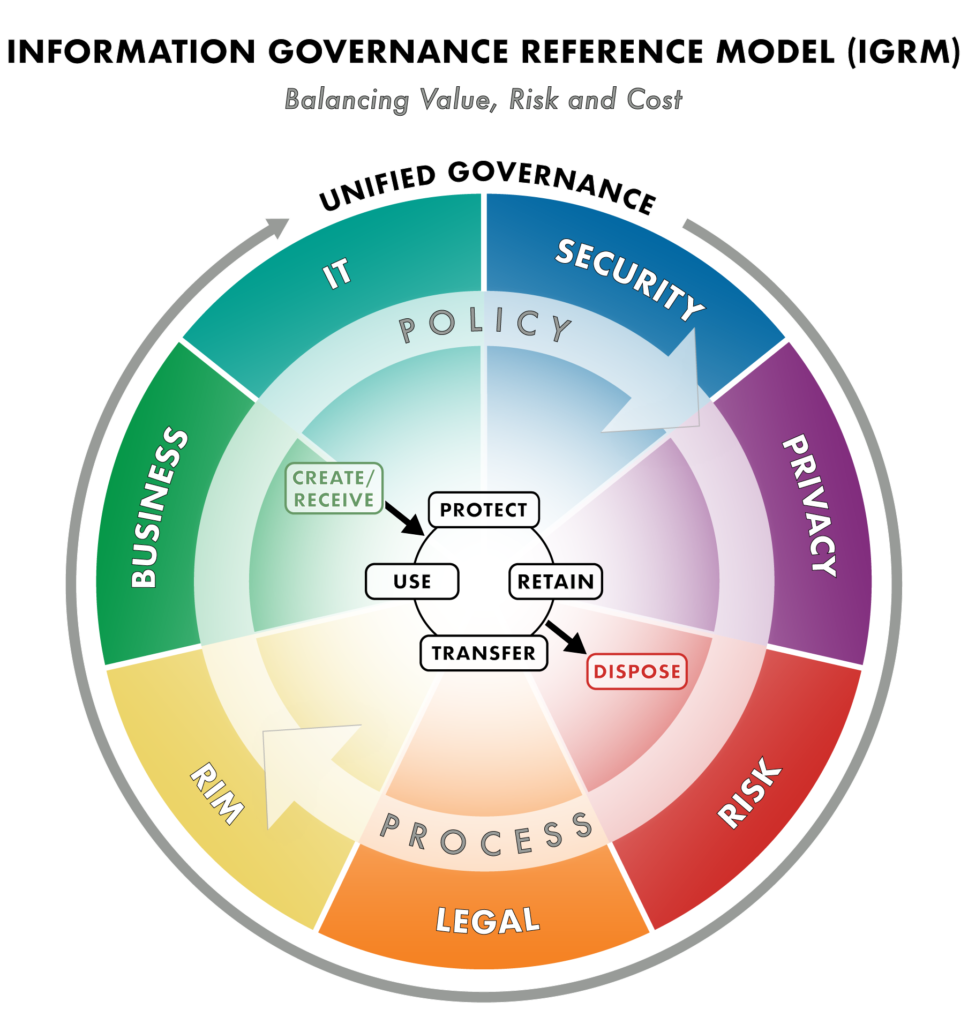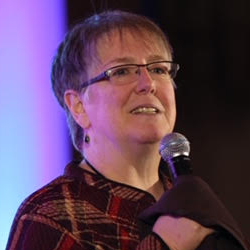MINNEAPOLIS, MN, USA, February 7, 2022 /EINPresswire.com/ — Setting the global standards for e-discovery, the Electronic Discovery Reference Model (EDRM) is pleased to announce the final Information Governance Reference Model version 4.1, revised after public comment on Version 4.0. Information Governance Reference Model version 4.1 replaces and supersedes all previous versions.
EDRM develops and promotes thought leadership, frameworks and best practices in e-discovery, with its engaged global community comprised of knowledgeable, multidisciplinary professionals. EDRM contributors continue to enhance e-discovery, privacy, security and information governance frameworks, processes and standards.

“The new IGRM model shows the modernization of information governance and the EDRM generally,” said Robert Keeling, Chair of the EDRM Global Advisory Council and partner at Sidley Austin LLP. “The new model will be incorporated into the industry-leading EDRM graphics and projects going forward.”
The resulting IGRM v.4.1, which incorporates the public comments, reflects the team’s consensus view of a highly effective approach for supporting discussions about the development and expansion of corporate information governance programs, regardless of scale.
Eric P. Mandel, consultant at Innovative Driven, and co-Project Trustee
The IGRM Project is led by industry experts Eric P. Mandel, e-discovery, privacy, information governance, compliance, cyber and information risk consultant at Innovative Driven, and Lynn Molfetta, information governance at Citadel, working with their project team of experts. EDRM and the IGRM Project are grateful to Cobra Legal Solutions for the beautiful diagram graphic. The team will now revise, enhance and create supporting documents for the new graphic.
“IGRM Version 4 was a group effort by industry experts from diverse backgrounds,” says Mandel. “The team sincerely appreciated the considerable feedback we received during the public comment period. The resulting IGRM v.4.1, which incorporates the public comments, reflects the team’s consensus view of a highly effective approach for supporting discussions about the development and expansion of corporate information governance programs, regardless of scale.”
“Sound information governance is increasingly important in this information age, characterized by the proliferation of data, and the need for businesses to get the most value out of their data, while also complying with regulatory requirements, meeting litigation discovery demands, and protecting against security risks, said David Cohen, chair of the EDRM Project Trustees and partner at Reed Smith LLP. “The EDRM IGRM Team has succeeded in developing a new and improved diagram that concisely illustrates the basic information lifecycle, and the organizational domains responsible for developing and implementing policies and practices to best balance information value, risks and costs.”
“EDRM is humbled to support the consensus work of our project teams,” says Mary Mack, EDRM chief legal technologist and CEO. “Recognizing and involving organizational stakeholders like security, privacy and risk professionals are key to a successful information governance program.”
The EDRM community, comprised of 33% corporations, 30% law firms and 23% software and service providers, 12% governments with the remaining 2% being a mix of educators, students, judges and media in 136 countries spanning six continents.
About EDRM
Empowering the global leaders of e-discovery, the Electronic Discovery Reference Model (EDRM) creates practical resources to improve e-discovery, privacy, security and information governance. Since 2005, EDRM has delivered leadership, standards, tools, guides and test datasets to improve best practices throughout the world. EDRM has an international presence in 136 countries and growing and an innovative support infrastructure for individuals, law firms, corporations and government organizations seeking to improve the practice and provision of data and legal discovery. Learn more about the EDRM today at EDRM.net.
About the IGRM Revision Project
The Information Governance Reference Model was initially created to frame the discussion of information management, in the same way the Electronic Discovery Reference Model functions for e-discovery. This project focuses on updating the IGRM as well as recognizing the interconnection between this project and the Maturity Assessment Project. Maturity is measured in part by reviewing the level of collaboration among key stakeholders, which is at the very core of excellent information management. Project trustees Eric Mandel, consultant at Innovative Driven, Inc., and Lynn Molfetta, information governance for Citadel, are building on the work of Eric Sedwick.
About EDRM
Empowering the global leaders of e-discovery, the Electronic Discovery Reference Model (EDRM) creates practical resources to improve e-discovery, privacy, security and information governance. Since 2005, EDRM has delivered leadership, standards, tools, guides and test datasets to improve best practices throughout the world. EDRM has an international presence in 136 countries and growing and an innovative support infrastructure for individuals, law firms, corporations and government organizations seeking to improve the practice and provision of data and legal discovery. Learn more about the EDRM today at EDRM.net.
EDRM Media Contact
Kaylee Walstad
Chief Strategy Officer, EDRM
+1 612-804-3244
kaylee@edrm.net
Visit us on social media:
Twitter
LinkedIn


